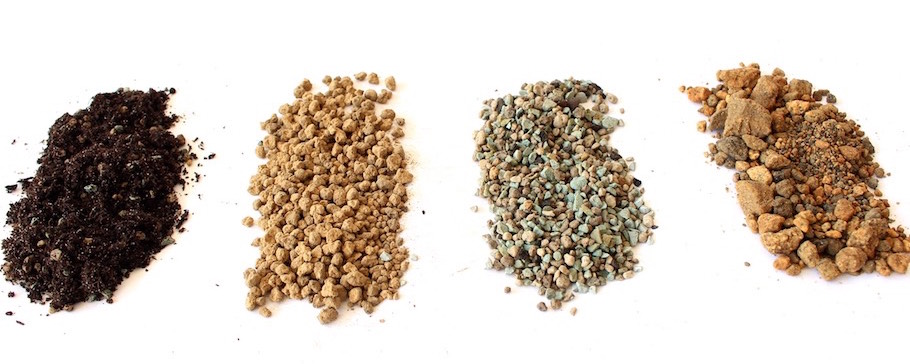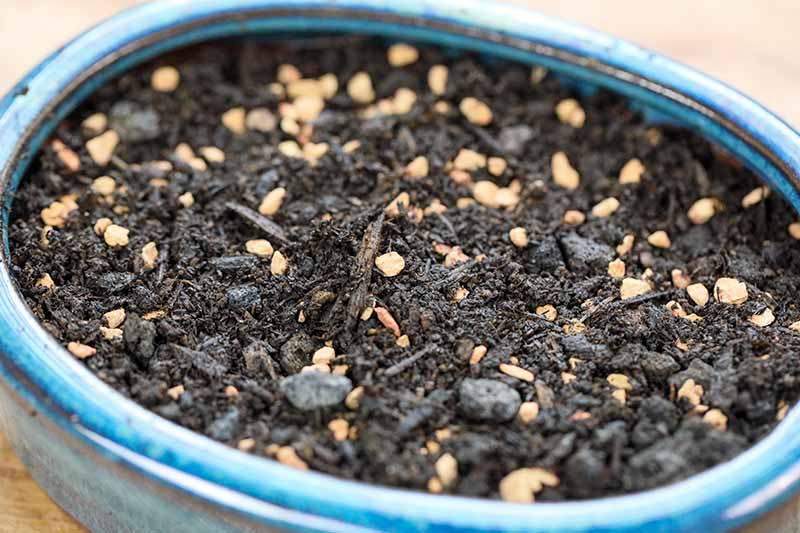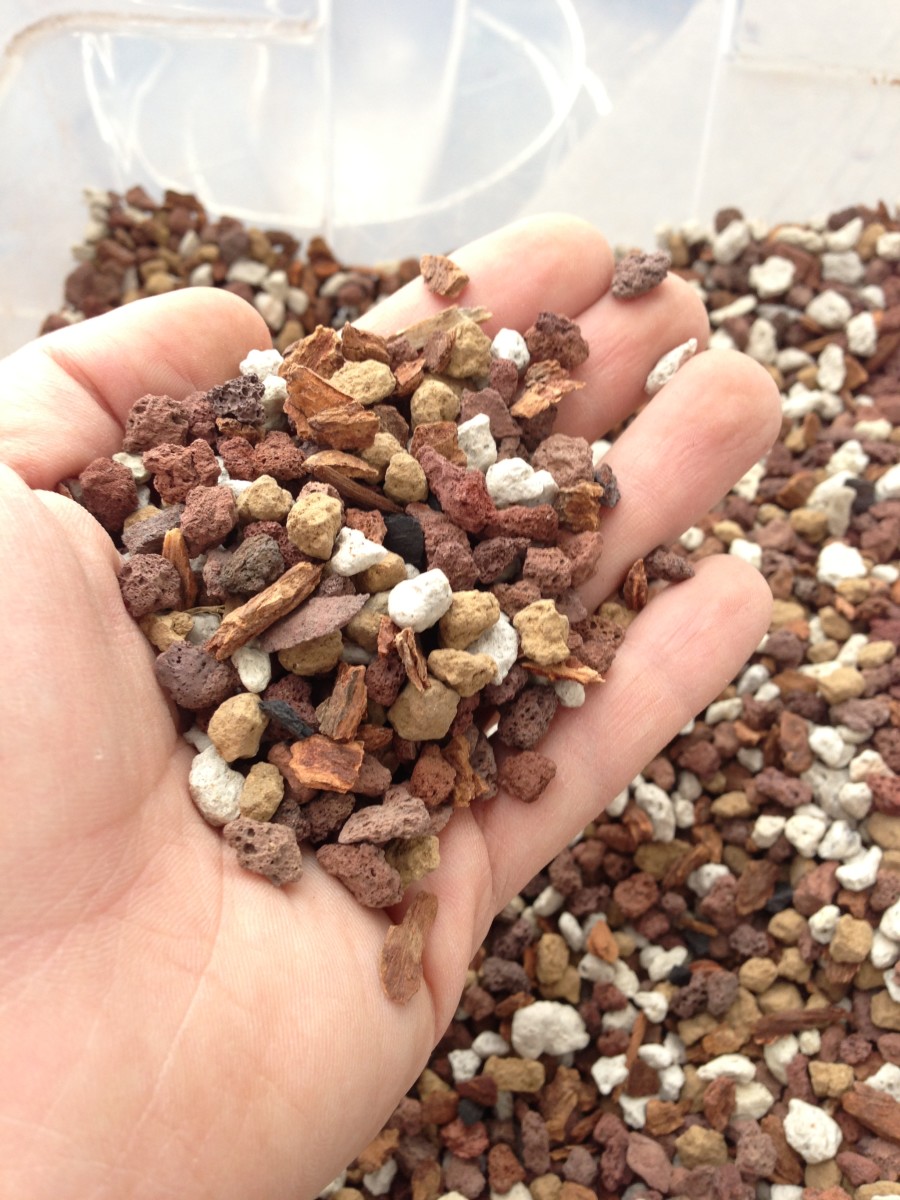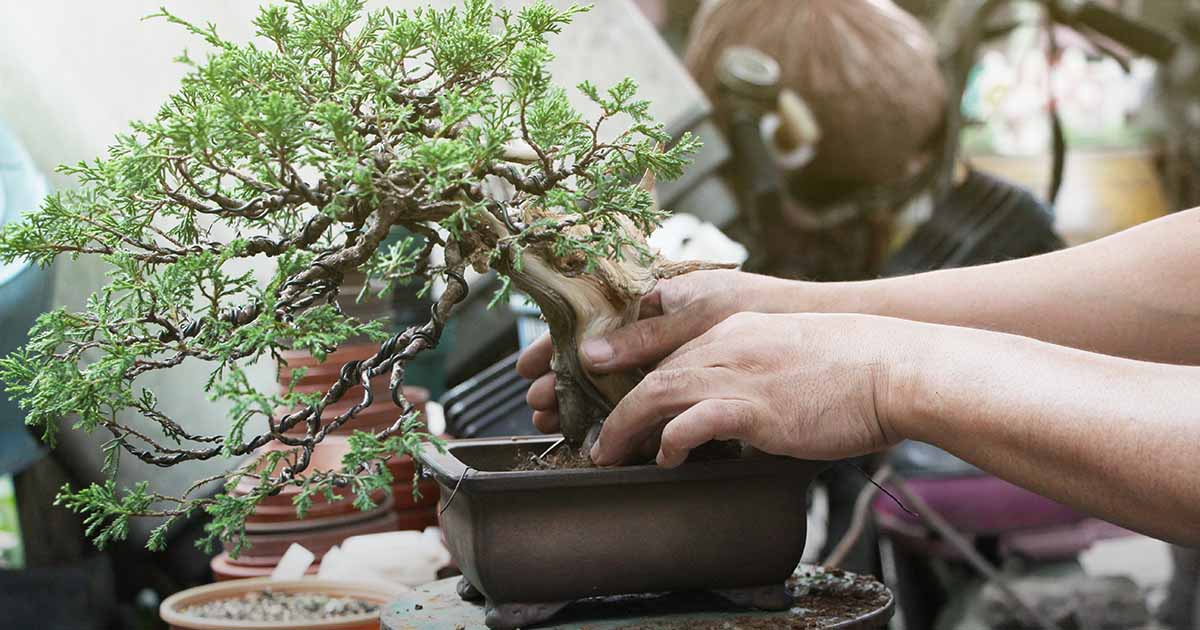In the following paragraphs, we'll investigate the differing types of soil and substrates Employed in bonsai cultivation, which include natural and organic and inorganic choices.
We'll also discover proposed soil mixtures for several bonsai species, including deciduous, coniferous, and indoor varieties. From akadama and pumice to moss and river sand, we will dive in to the interesting globe of bonsai soil and assist you realize why It is really a vital A part of cultivating these exquisite trees.

Bonsai soil
What is bonsai soil?
Bonsai soil is a specialized type of soil that is specifically formulated for growing and maintaining bonsai trees. Unlike regular garden soil, bonsai soil is well-draining and provides the necessary nutrients and moisture balance for the tree's root system. The composition of bonsai soil is carefully designed to meet the unique needs of bonsai trees, ensuring their health and longevity.
The importance of bonsai soil
The choice of soil plays a crucial role in the success of your bonsai tree. The right soil provides optimal drainage, allowing excess water to flow freely and preventing root rot. It also promotes a healthy and well-developed root system, which is essential for the overall health and growth of the tree. Bonsai soil retains moisture while allowing air to reach the roots, striking the perfect balance for the tree's needs. Choosing the right bonsai soil is essential for maintaining a healthy and thriving bonsai tree.
Bonsai substrates
What are bonsai substrates?
Bonsai substrates refer to the different materials that can be used to create the ideal soil composition for bonsai trees. These substrates are carefully chosen to meet the specific needs of different species of bonsai trees and to ensure proper water drainage and nutrient availability.
Different types of bonsai substrates
There are various types of bonsai substrates available, each with its own unique characteristics and benefits. Some common bonsai substrates include:
- Organic materials: These include ingredients such as bark, peat moss, and coconut coir. Organic substrates help retain moisture and provide essential nutrients to the bonsai tree.
- Inorganic supplies: These include things like components like pumice, lava rock, and akadama. Inorganic substrates present superb drainage, guaranteeing that excess water isn't going to accumulate around the roots in the bonsai tree.
- Soil amendments: These are definitely substances which can be included towards the soil mixture to boost its properties. Examples of soil amendments incorporate perlite, vermiculite, and sand. They Increase the soil's aeration, water-holding ability, and nutrient availability.
By being familiar with the different types of bonsai substrates and their Houses, you could choose the best suited just one for your bonsai tree's requirements.
Organic or Inorganic Soils
Natural soils for bonsai
Natural soils for bonsai are made up of normal products like bark, peat moss, coconut coir, and compost. These elements give a rich source of nutrients to the bonsai tree and encourage balanced root development. Organic soils also have excellent drinking water retention Homes, guaranteeing the tree gets suitable humidity concerning watering classes. Nevertheless, it's important to note that organic soils might break down as time passes and turn out to be compacted, leading to bad drainage and prospective root issues.
Inorganic soils for bonsai
Inorganic soils for bonsai include resources like pumice, lava rock, akadama, and soil amendments like perlite or vermiculite. These resources have great drainage Houses, protecting against waterlogged soil and endorsing aeration within the roots. Inorganic soils are most well-liked by quite a few bonsai lovers due to their longevity and talent to supply a stable atmosphere to the bonsai tree's root method. On the other hand, They could call for far more Regular watering and additional fertilization, as they do not hold just as much humidity or nutrients as natural and organic soils.
Pluses and minuses of working with organic and natural and inorganic soils for bonsai
Picking in between organic and natural and inorganic soils for your bonsai tree relies on several variables, including the unique species of tree, your weather, and personal Tastes. Here's the advantages and disadvantages of each and every:
Organic and natural soils:
- Professionals: Provide nutrients, superior drinking water retention, promote balanced root progress.
- Disadvantages: May stop working as time passes, probable for inadequate drainage Otherwise appropriately maintained.
Inorganic soils:
- Professionals: Excellent drainage, prolonged-lasting, steady atmosphere for roots.
- Negatives: Significantly less h2o retention, could involve far more Recurrent watering and fertilization.
By taking into consideration the benefits and drawbacks of both equally natural and inorganic soils, you can also make an informed decision based on the particular demands of your bonsai tree.
Soil parts
Vital parts of bonsai soil
Bonsai soil is typically composed of a few most important factors: grit, organic and natural issue, and clay. These parts operate alongside one another to generate The best soil construction for that bonsai tree's root program.
- Grit: Grit, for instance sand or perlite, provides drainage and aeration while in the soil. It helps prevent waterlogging and permits air to reach the roots.
- Natural make any difference: Organic make a difference, for instance compost or bark, provides nutrients for the bonsai tree. It also will help retain humidity and Enhance the soil's General structure.
- Clay: Clay particles deliver some drinking water retention qualities and assist bind the soil with each other. Nonetheless, too much clay may lead to lousy drainage and compaction.
Function of each soil part
Every soil element plays a significant part in creating a effectively-well balanced and wholesome natural environment with the bonsai tree's roots.
- Grit: Grit gives the required drainage and aeration during the soil. It prevents the roots from sitting in stagnant drinking water, cutting down the potential risk of root rot and endorsing In general root well being.
- Natural and organic subject: Natural issue presents essential nutrients to your bonsai tree. It aids in dampness retention and contributes to the general structure in the soil.
- Clay: Clay particles enable bind the soil jointly and supply some water retention ability. However, it is important to balance the amount of clay in order to avoid difficulties like poor drainage and compaction.
By knowing the roles of every soil part, you may make a well balanced bonsai soil blend that satisfies the precise requirements of your respective tree.

Recommended Bonsai soil mixtures
Common bonsai soil mixtures
There are several common bonsai soil mixtures that have been proven effective for various types of bonsai trees. These mixtures typically consist of a combination of inorganic substrates, organic matter, and soil amendments.
Some of the commonly used bonsai soil mixtures include:
- Akadama, pumice, and lava rock: This mixture is popular among bonsai enthusiasts for its excellent drainage and water retention properties.
- Akadama, lava rock, and organic make a difference: This combination brings together the key benefits of inorganic substrates Together with the nutrient-wealthy Homes of natural make any difference.
- Pumice, perlite, and bark: This combination supplies superior drainage and aeration although retaining some dampness and giving nutrients.
These are definitely just a few samples of bonsai soil mixtures, and The perfect mixture website will depend on the particular wants of the bonsai tree and also your local weather.
Factors to think about when choosing a bonsai soil mixture
When selecting a bonsai soil combination, it is vital to look at the following components:
- Species of bonsai tree: Distinctive species have distinct humidity and nutrient requirements. Exploration the specific requirements of your tree to pick a soil mixture that fulfills its necessities.
- Climate: The local weather you reside in can impact the dampness retention Houses with the soil. Think about the normal humidity and temperature close to you when choosing a soil mixture.
- Watering habits: Your personal watering habits and plan ought to align Along with the soil mixture you select. Some mixtures need far more Recurrent watering, while some keep moisture for longer periods.
- Spending budget: Some soil factors may be costlier than Other folks. Contemplate your spending budget when selecting a soil combination.
By using these elements into account, you are able to go with a bonsai soil mixture that gives the ideal developing conditions for your personal tree.
Deciduous Bonsai soil
Best soil composition for deciduous bonsai
Deciduous bonsai trees, including maple or birch, have specific soil necessities to assistance their advancement and well being. The top soil composition for deciduous bonsai commonly includes a mixture of organic issue, inorganic substrates, and soil amendments.
A suggested soil composition for deciduous bonsai could contain:
- Akadama: Presents very good water retention even though permitting for drainage. It also releases nutrients slowly and gradually after some time.
- Pumice: Promotes aeration and drainage in the soil, protecting against waterlogging.
- Bark or peat moss: Adds organic issue for the soil, supplying nutrients and humidity retention.
This soil composition ensures that the roots of deciduous bonsai trees acquire the correct equilibrium of dampness, nutrients, and oxygen for optimal growth.

Coniferous and Pine soil
Ideal soil mixture for coniferous and pine bonsai
Coniferous and pine bonsai trees have specific soil requirements due to their water retention needs and preference for acidic soil. An ideal soil mixture for coniferous and pine bonsai should provide good drainage while retaining moisture and maintaining the desired pH level.
A recommended soil mixture for coniferous and pine bonsai may include:
- Akadama: Provides excellent water retention while allowing for sufficient drainage. It releases nutrients slowly over time.
- Pumice: Encourages aeration and drainage while in the soil, preventing waterlogged roots.
- Peat moss: Provides organic issue and acidity to the soil, producing a super pH amount for coniferous and pine trees.
This soil combination makes certain that the roots of coniferous and pine bonsai trees obtain the appropriate balance of dampness, nutrients, and acidity for his or her particular needs.
Akadama
Exactly what is akadama?
Akadama is actually a type of clay soil that is broadly Employed in bonsai cultivation. It's recognized for its fantastic water retention Homes, which be certain a steady offer of humidity for the bonsai tree's roots. Akadama is likewise prized for its ability to release nutrients bit by bit over time, offering a reliable source of nourishment for your tree.
Great things about making use of akadama in bonsai soil
Working with akadama in bonsai soil offers numerous Added benefits:
- H2o retention: Akadama has Outstanding drinking water retention Houses, allowing it to hold dampness with no getting waterlogged. This ensures that the bonsai tree's roots receive a regular offer of h2o, endorsing healthy development.
- Nutrient release: Akadama gradually releases nutrients in to the soil eventually, supplying a steady supply of nourishment for that bonsai tree. This cuts down the necessity for Regular fertilization and aids preserve a balanced nutrient profile.
- Aeration: Inspite of its drinking water retention abilities, akadama also presents adequate aeration to the bonsai tree's roots. It will allow air to reach the root process, blocking concerns for example root rot resulting from not enough oxygen.
By incorporating akadama into your bonsai soil, you are able to build an optimal developing environment to your tree, guaranteeing its well being and vitality.

Lava rock
How lava rock benefits bonsai soil
Lava rock is a popular component in bonsai soil mixtures due to its excellent drainage and aeration properties. It is typically used in conjunction with other substrates to create the ideal soil composition for bonsai trees.
The benefits of lava rock in bonsai soil include:
- Drainage: Lava rock provides excellent drainage, preventing waterlogging and ensuring that excess water flows freely through the soil. This helps prevent root rot and provides a healthy environment for the roots to thrive.
- Aeration: The porous character of lava rock permits air to circulate throughout the soil, supplying oxygen towards the bonsai tree's root technique. Right aeration is very important for balanced root enhancement and In general tree advancement.
- Longevity: Lava rock is usually a strong materials that doesn't break down very easily. This makes sure that the soil construction remains secure after a while, cutting down the necessity for Repeated soil replacements.
Lava rock is out there in various dimensions and styles, enabling for personalization depending on the specific needs of your bonsai tree and soil prerequisites.
Differing kinds of lava rock
You can find different types of lava rock that could be Utilized in bonsai soil mixtures, together with:
- Black lava rock: Black lava rock is actually a frequently utilised product in bonsai soil mixtures. It provides fantastic drainage Homes and provides an aesthetic factor to the general presentation on the bonsai tree.
- Red lava rock: Red lava rock is an additional common option in bonsai soil mixtures. It provides very similar drainage and aeration Gains as black lava rock but has a definite reddish color that provides visual curiosity for the container.
Both black and red lava rocks are greatly available and will be conveniently integrated into your bonsai soil combination.
Potting
Necessary methods for prosperous bonsai potting
Potting is usually a essential system in bonsai cultivation, mainly because it right impacts the well being and enhancement in the tree's roots. Below are a few vital methods for productive bonsai potting:
- Pick the right pot dimension: Decide on a bonsai pot that allows for root progress though even now providing a cosy in shape. Prevent pots which have been way too massive, since they can result in too much soil dampness and poor root progress.
- Use bonsai wire: Safe the tree during the pot applying bonsai wire to be sure steadiness. This stops the tree from shifting or turning into uprooted all through watering or strong winds.
- Trim and unfold the roots: Ahead of potting the bonsai tree, thoroughly trim and spread out the roots. This encourages outward progress and prevents root tangling or root-sure challenges.
- Insert mesh screens: Place mesh screens above the drainage holes at the bottom of your pot to forestall soil erosion and be certain good drainage.
- Use fresh new bonsai soil: When potting, often use fresh bonsai soil to offer the necessary nutrients and optimal developing situations for your roots.
By following these vital suggestions, you can be certain An effective potting approach and endorse the general wellbeing and progress of your bonsai tree.
The position of bonsai pots in soil humidity Manage
Bonsai pots Engage in an important function in soil moisture Handle, straight impacting the wellbeing and growth on the tree. Bonsai pots are generally shallow and have drainage holes, permitting excess h2o to escape and blocking the soil from turning out to be waterlogged.
The look of bonsai pots encourages evaporation and air circulation, which will help regulate soil moisture stages. The shallow depth and extensive opening with the pot expose extra surface region of your soil towards the air, aiding in dampness evaporation. This helps prevent the roots from sitting down in excessively damp soil, lessening the risk of click here root rot and also other h2o-linked challenges.
Moreover, the drainage holes in bonsai pots allow any surplus h2o to flee, stopping waterlogged soil and selling aeration round the roots. Proper aeration is essential for the well being and growth of the foundation system, making certain the bonsai tree receives the required oxygen for progress.
Through the use of bonsai pots suitable for helpful humidity control, it is possible to create a favorable surroundings on your bonsai tree's roots and boost its In general wellness and vitality.
In summary, choosing the right bonsai soil is vital for your good results and wellness of the bonsai tree. Knowledge the differing types of bonsai substrates, the purpose of natural and organic and inorganic soils, The real key components of bonsai soil, and the various recommended soil mixtures will help you provide the optimal growing conditions for the bonsai tree. Regardless of whether you've got a deciduous or coniferous bonsai, incorporating components like akadama and lava rock can boost the soil's drainage and nutrient availability. In addition, listening to potting approaches and using bonsai pots suitable for moisture control will even more assistance the thriving growth of your bonsai tree. With proper understanding and implementation of bonsai soil tactics, you'll be able to benefit from the magnificence and artistry of bonsai cultivation For some time to come.
